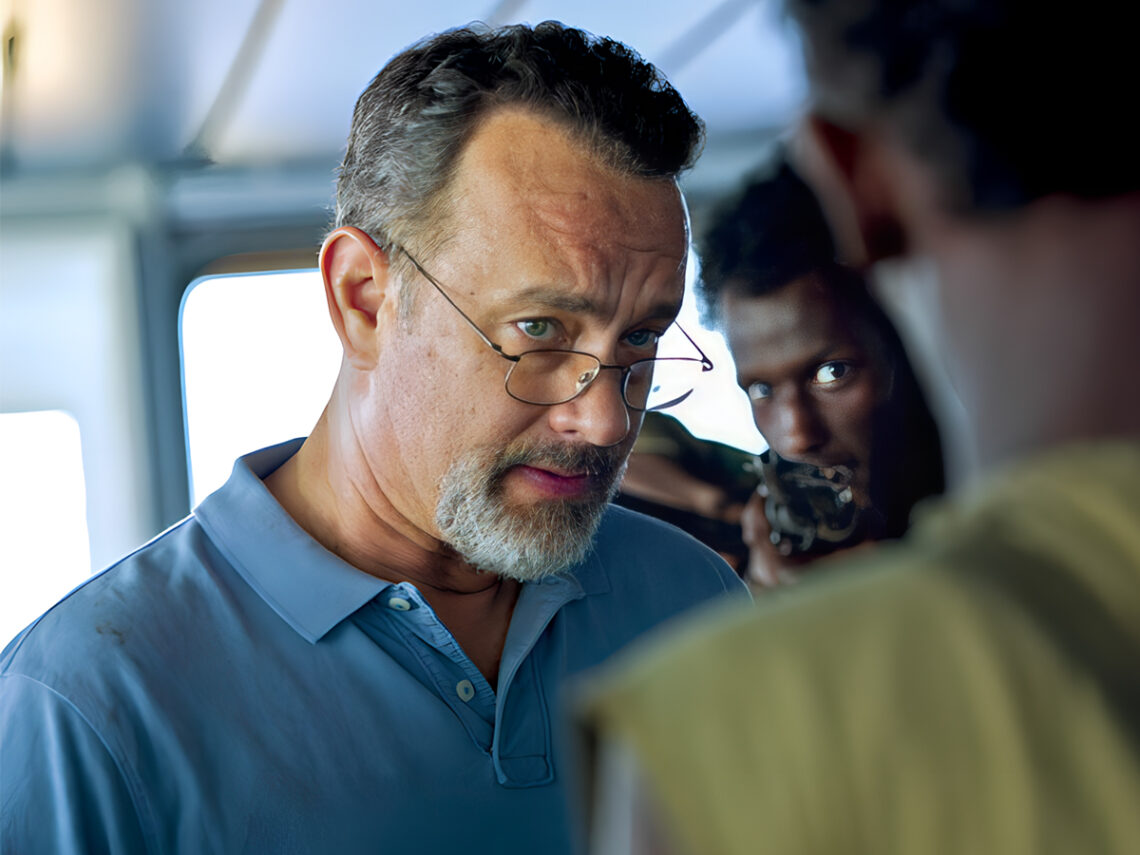The Oscar-nominated movie Captain Phillips, one of Tom Hanks’ best, is based on the true story of the hijacking of the MV Maersk Alabama by Somali pirates in 2009. The movie, directed by Paul Greengrass and starring Tom Hanks as Richard Phillips, dramatises these events and the harrowing ordeal experienced by the crew of the MV Maersk Alabama.
While the film takes some artistic liberties for storytelling purposes, it remains largely faithful to the true story of the hijacking and Captain Phillips’ actions. The film is as gripping as what happened in reality, even though some have cast doubts on the real Captain Phillips’ bravery.
In the 2013 film, during a practice drill, Phillips discovers that their ship is being followed by pirates. He pretends to call for help, causing one pirate skiff to retreat while the other persists. Eventually, the pirates board the vessel, taking Phillips and the crew hostage. Initially, Phillips offers them a ransom, but the pirates are after the insurance money they can get if they capture the whole vessel.
The crew fights back, capturing one pirate but the remaining pirates manage to take Phillips hostage before fleeing on a lifeboat. Nerve-wracking tension escalates till the US Navy intervenes. It is a roaring feast of tense thrills only heightened by the fact that the whole thing played out for real.
The true story behind ‘Captain Phillips’
In April 2009, the Maersk Alabama, a US cargo ship owned by the Danish shipping company Maersk Line, was hijacked by four pirates in the Somali Basin. This event marked the first successful pirate seizure of a US-flagged ship since the early 19th century. As the film retells, the pirates boarded the vessel but were unable to take full control due to the crew’s defensive measures. The ship’s captain, Richard Phillips, was however taken hostage by the pirates, who later fled with him in a lifeboat.
The US Navy dispatched the USS Bainbridge and USS Halyburton to the scene. Negotiations continued between the pirates and the naval forces. However, when the pirates fired shots at the USS Halyburton, Navy SEAL snipers from the USS Bainbridge ended up firing back. They killed the three pirates on the lifeboat and managed to rescue Captain Phillips unharmed. Another pirate, Abduwali Muse—the role earned Barkhad Abdi a BAFTA win, plus Oscar and SAG nominations—who had been negotiating for Phillips’ release, was taken into custody.
After the incident, Muse was flown to the United States to stand trial. He faced charges of piracy, hostage-taking, and conspiracy to seize a ship by force. Muse’s lawyers initially argued that he should be tried as a juvenile, alleging that he was 15 or 16 years old (he later admitted he was 18) at the time of the incident. But the court ruled that he would be tried as an adult. Muse eventually pleaded guilty to hijacking, kidnapping, and hostage-taking charges (not the piracy claims) and received a sentence of 33 years and nine months.
The hijacking of the Maersk Alabama was later recounted by Captain Phillips in the book A Captain’s Duty, which was co-written with Stephan Talty. The book was adapted into the film Captain Phillips, starring Catherine Keener (as Richard Phillips’s wife), Michael Chernus (the first officer on the ship), David Warshofsky (the chief engineer), Corey Johnson, and Chris Mulkey in addition to Hanks and Abdi.
The incident highlighted the ongoing issue of piracy off the coast of Somalia, where pirates had been targeting ships for ransom for a while. The bullet-marked lifeboat used by the pirates during the hijacking was donated to the National Navy UDT-SEAL Museum and is now on display, along with other related artefacts.
Captain Phillips is currently streaming on Netflix.
